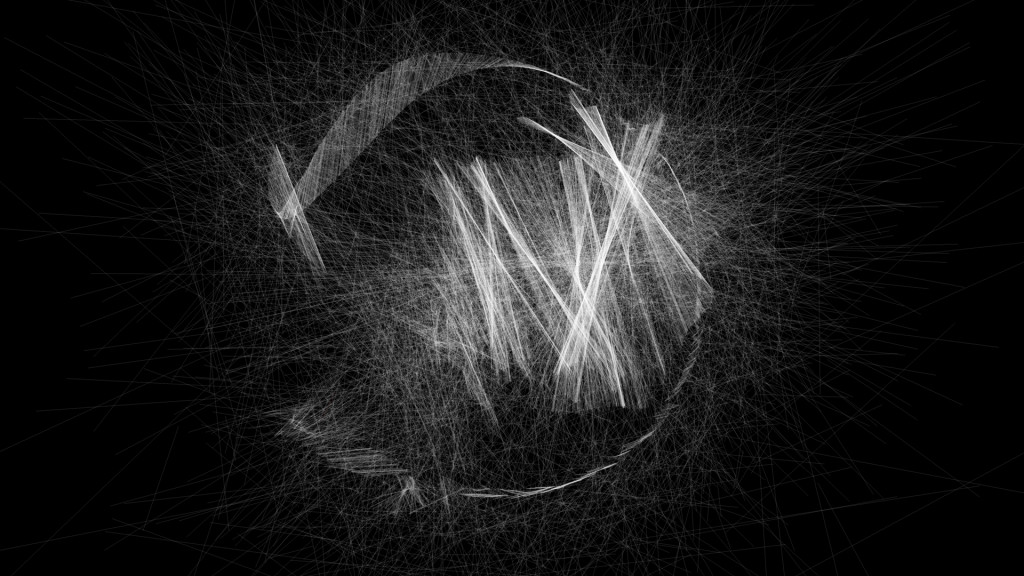The chdh collective studies the relationship between image and sound by creating audio and visual algorithmic synthesizers. They mainly use these audiovisual instruments during live performances. Using equations describing natural mechanisms, they generate abstract choreography of particles whose minimalist material reveals underlying structures of great complexity, shaped by strange organic attractors. In search of a synaesthetic radicalism, their hypnotic performances strive on joint movement between image and sound and owe to experimental cinema (form-wise) just as much as to improvised music (performance-wise).
Can you introduce your project?
We are mainly working on audiovisual performances. Morphist, our latest project, is an abstract choreography of particles. Under the action of forces, they organize themselves into complex shapes, constantly disrupted by unstable stirrings. This material reveals underlying structures of great complexity like strange organic attractors. Morphist is very radical and hypnotic and can be placed between experimental cinema and an improvised musical performance.
What is the relationship between sound and image in your work?
This relationship is the main aspect of our work: the sound does not represent the image, and the video is not a vizualization of the sound. They are both generated by an underlying process. Sound and image are very related without being redundant. The material used is very minimalist – white lines and points for the video, sinuses and noises for the audio – to emphasize the movement of these two media: the way they move or interact. Actually, this project is more about movement and choreography than images or sound.
Can you talk about your process of work – creating algorithmic synthesizers?
We create what we call audiovisual instruments, processes that generate sounds and images. These instruments are based on physical modelling: equations simulating natural mechanics like gravity, fluid mechanics or attraction that allow us to produce natural and organic movements. These movements are used to control our audiovisual synthesizers. During our live performances, we interact with the equations by changing their internal parameters. We add forces, modify the environment and change the structures in order to play with this system. The system has a life of its own, so we are constantly struggling against it to follow the score of the performance.
Can you talk about how you distribute your work and its ideological implications? (free software, open source technology, etc)
The existence of free software is very important as an alternative model to counter the greedy appetite of proprietary software companies. We use Pure Data for most of our projects, a free software developed by a large community. We learn a lot from this community, so it makes perfect sense to give back as much as we can. For example, with Egregrore source, we choose to distribute all the code we developed for this performance. Everyone can freely use it, modify it, and see how it’s made. It raises complex questions about the border between code and artistic creation because it is an instrument as well as an artwork.
What are you working on at the moment?
We are working on a new performance exploring the perception of white noise but it’s too early to talk about it.
